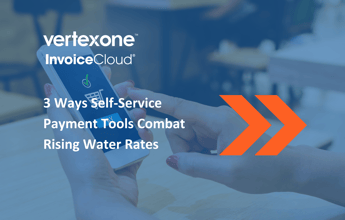
Over the next 20 years, the U.S. water utility industry needs to make trillion dollar infrastructure investments to maintain the service reliability and quality that citizens have come to expect. These investments will ultimately be financed and paid for by ratepayers, which presents a new challenge for water utilities trying to increase customer satisfaction and build support for these massive investments. The most successful water utilities recognize that asking customers to pay for large-scale investments is much easier when ratepayers understand and value the services they receive. Fortunately, there are proven, cost-effective solutions that water utilities can deploy to begin to build support immediately.
- Embrace multi-channel customer engagement
According to the Pew Center, 77% of Americans own a smartphone and 86% of Americans are on social media. We have rapidly become a mobile-first, digital society. In fact, over one third of visits to the WaterSmart Customer Portal take place on a mobile device, and that number is growing quickly. Multi-channel customer engagement, especially using digital communications, is a proven and cost-effective way to build customer satisfaction. Modern-day customers are always connected and expect easy access to their water consumption and billing information online. By recognizing the wave of digital natives who are quickly becoming the core base of ratepayers, water utilities can craft digital outreach strategies to satisfy consumer expectations and provide greater levels of customer service. However, water utilities shouldn’t assume that these technologies are only for their younger customers. The average age of a WaterSmart Portal user is 55 and more than two-thirds of those over the age of 65 go online. Also, smartphone adoption among older American’s has nearly quadrupled in the past five years.
- Be Proactive
Every customer interaction with their water utility is an opportunity to increase trust and build support. For example, if the utility identifies a probable leak in a customer’s home and then helps them find and fix it, they have earned some serious goodwill with that customer. In fact, insurance payments for water damage average nearly $7,000 per household each year and are the second largest home insurance claim annually. Utilities should think about all the times a customer might interact with them, and come up with ways to improve those customer experiences. For example, if a customer calls in with a high bill complaint, the Utility can suggest ways to save. Or, while billing is top of mind, the utility might want to follow up to nudge the customer into enrolling in autopay or paperless billing. Utilities shouldn’t hesitate to candidly share information, even bad news. This communication is appreciated by customers and has been proven to lead to increased confidence in utility services. In fact, a 2004 AWWA study found that households that received a water quality report had higher customer satisfaction than households that didn’t, regardless of the information included in the report
- Be Personal (At Scale)
Sending a personalized message to one person is easy. Sending a personalized message to 10,000 people is hard. Getting the right message in front of the right customer at the right time yields better outcomes for customers but requires advanced segmentation and content personalization solutions. Studies found that personalized e-mails increased e-mail open rates by 29% and that click thru rates in segmented campaigns were 100% higher. Water utilities should embrace new industry-specific digital analytics and communication platforms that now allow them to engage with their customers in a targeted and relevant way. These investments will go a long way to improving customer satisfaction while reducing support and communication costs.
Using modern analytics and communication technologies present cost-effective solutions that will help the utility take advantage of the recommendations above. By combining these techniques, water utilities can drive measurable improvements in customer engagement and satisfaction and build support for critical infrastructure investments that will maintain system resiliency well into the future.
For more interesting detail on this post, download the full report and infographic on improving water utility customer satisfaction:





